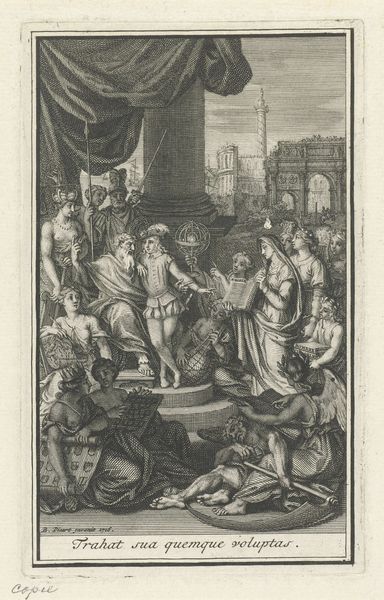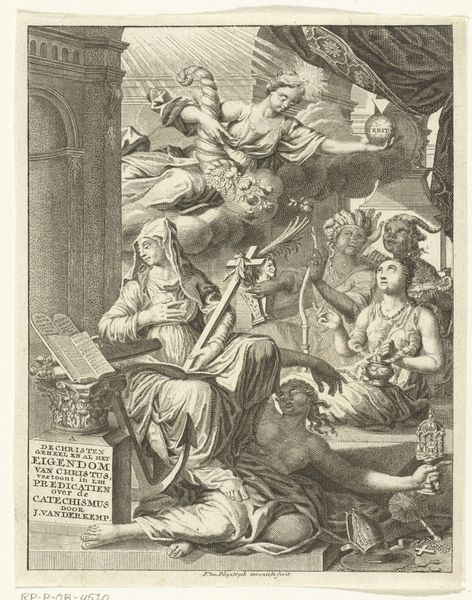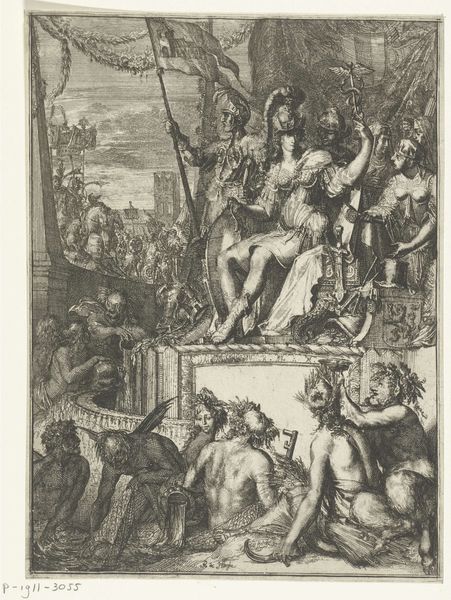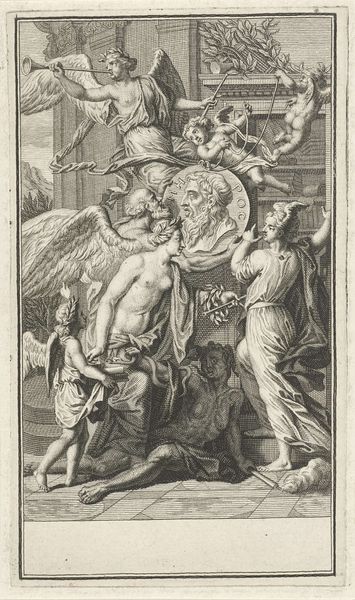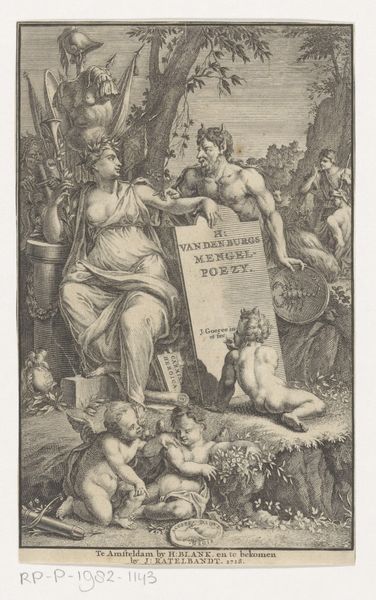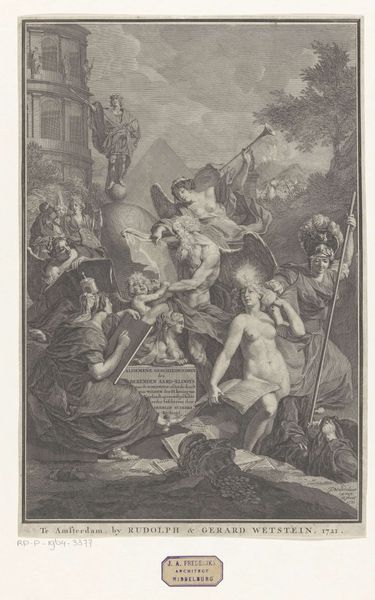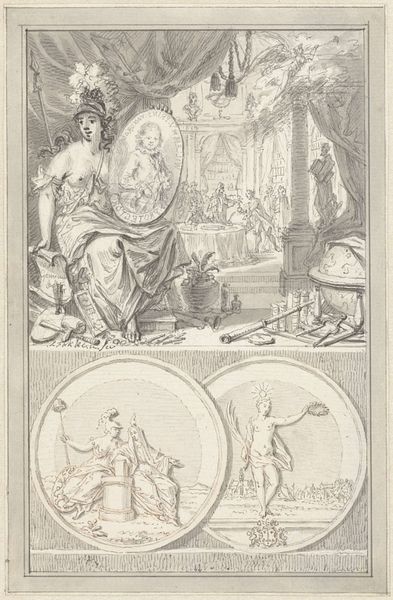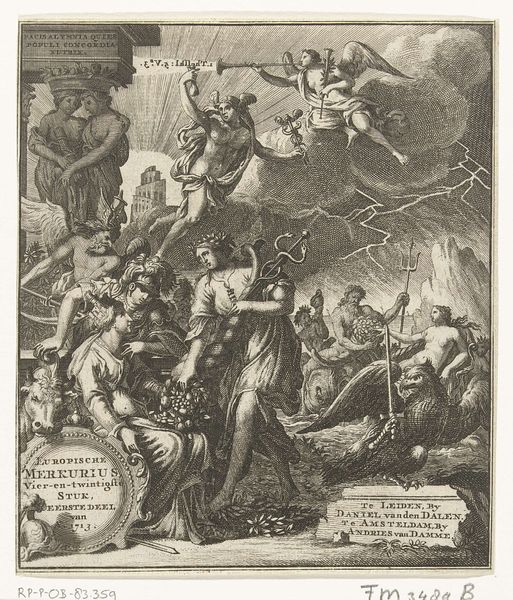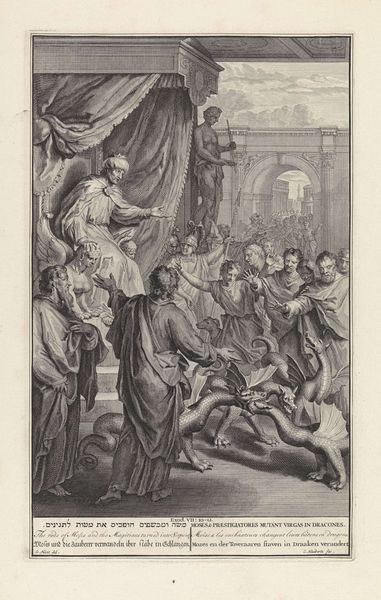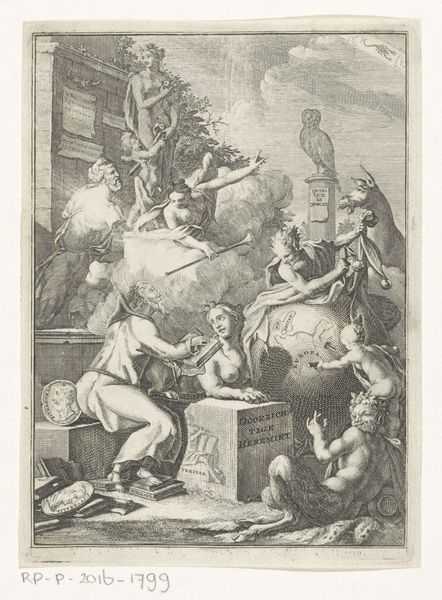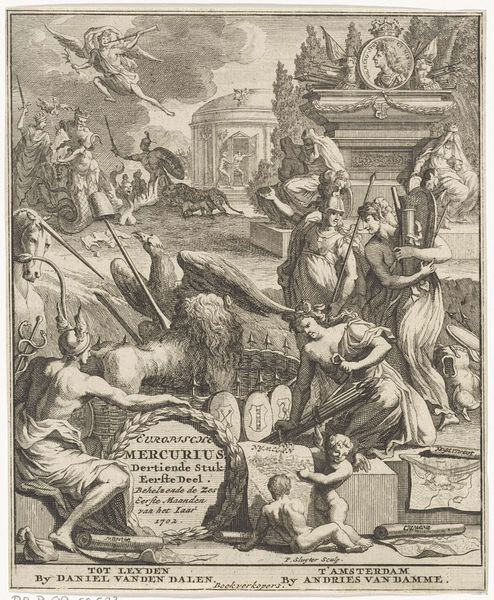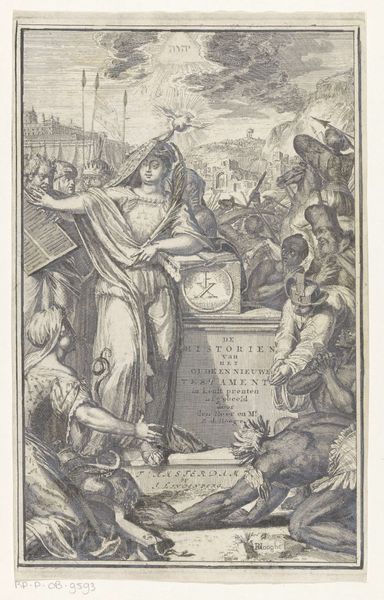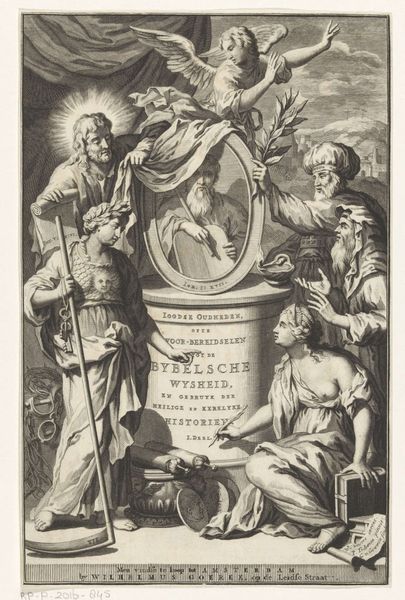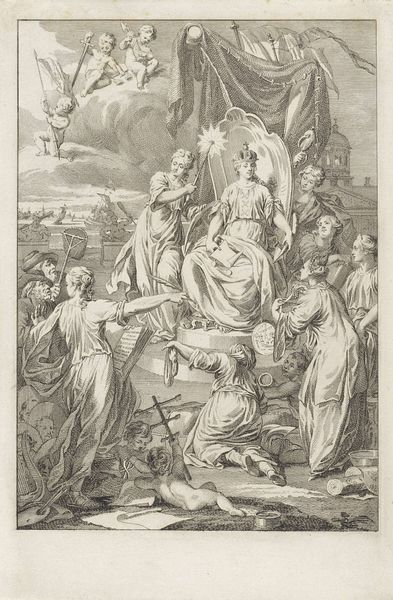
Titelprent voor 'De jure civitatis, libri tres' van Ulricus Huber 1694
0:00
0:00
engraving
#
allegory
#
baroque
#
pen drawing
#
history-painting
#
engraving
Dimensions: height 182 mm, width 127 mm
Copyright: Rijks Museum: Open Domain
This is Romeyn de Hooghe's title page for Ulricus Huber's "De jure civitatis, libri tres," etched around 1694. Immediately, the balanced composition draws us in. The allegorical figures of Justice and Law take center stage. De Hooghe’s deployment of line and form generates meaning. Justice, on the right, is blindfolded, holding scales, while Law, on the left, rests on a plinth with the book. These figures are rendered with meticulous detail. The chaotic scene in the background, filled with battling figures, emphasizes the need for legal order, which the figures in the foreground represent. The writhing figures at the bottom are a visual metaphor for the consequences of a society without laws. The contrast between the serene figures and the turbulent background isn't merely aesthetic. It’s a semiotic device, pitting order against chaos, reason against passion. De Hooghe compels us to consider how law functions as a cultural construct, imposing structure upon an inherently disordered world. This visual structure asks us to continuously re-evaluate the role and nature of civil law.
Comments
No comments
Be the first to comment and join the conversation on the ultimate creative platform.
